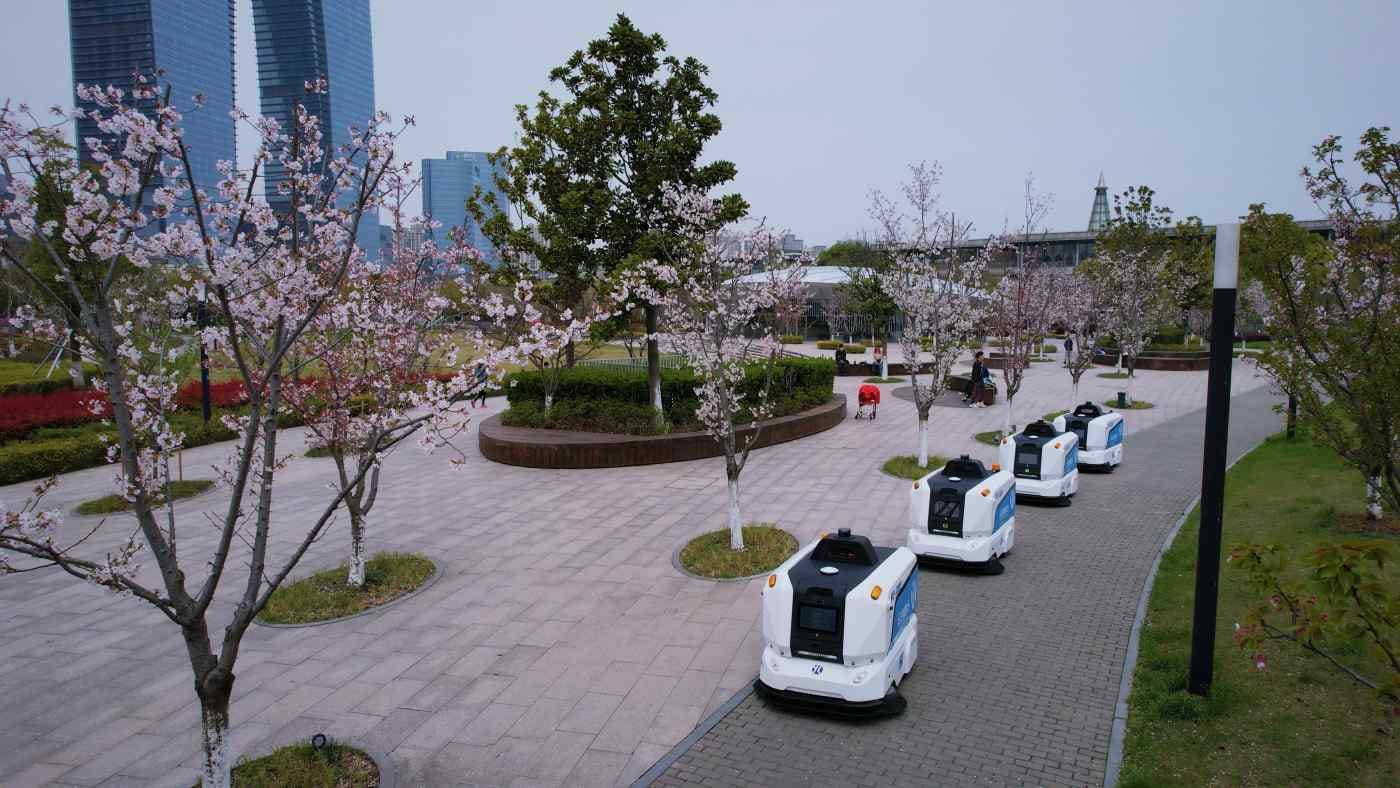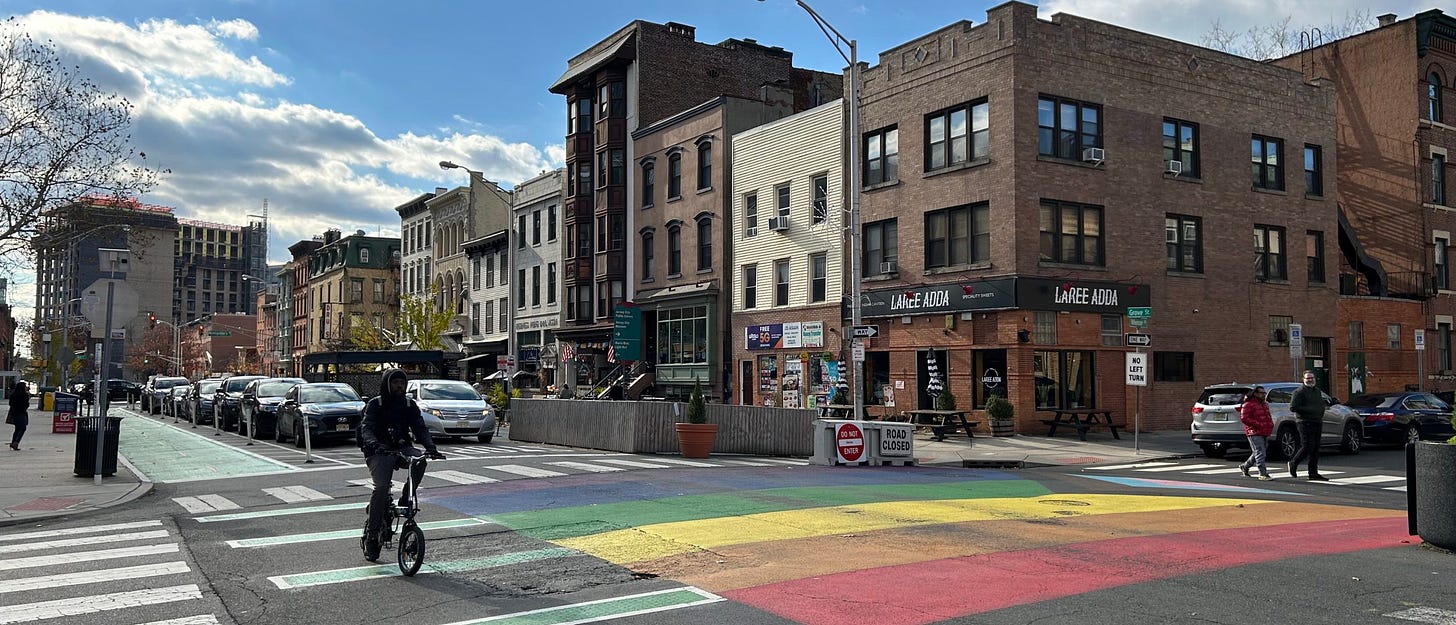Heya friends, happy Friday!
I’ll have you know that after last week’s edition, one subscriber and friend John sent me a detailed run down of my typos (mostly a case of missing apostrophes!). It was delightful. I promise to attempt to be better with my spell checks, but until that day comes just think of my newsletter like a murder mystery with missing apostrophes 😅.
No long preamble this week, so let’s dive straight into the news!
Read of the Week
AVs could double traffic congestion
So many headlines this week read, “the consequences of AVs nobody’s talking about,” which made me feel pretty smart because we’ve collectively been talking about this for well over four years! As a self-proclaimed Luddite, I am proud to be ahead of the curve for once, albeit I wish it was under a slightly more optimistic context. See below for new research from the UK that gives me that sweet, “told ya so” energy:
“Department for Transport (DfT) traffic projections for England and Wales show delays may rise by up to 85% from 2025 to 2060 in that scenario.. This would lead to more traffic by "increasing the mobility of the elderly and those who do not currently hold a driving licence", according to the report.” More “told ya so” in the research section this week too!
Government and Policy
US DOT unveils National Blueprint for Transportation Decarbonization
*Personally wishing the bike lane on the cover was bigger, but the massive train is a nice touch*
The blueprint goes so far to say that: “To address the climate crisis, we must eliminate nearly all greenhouse gas (GHG) emissions from the sector by 2050 and implement a holistic strategy to achieve a future mobility system that is clean, safe, secure, accessible, affordable, and equitable, and provides sustainable transportation options for people and goods.”
It’s a fairly comprehensive report, although I wish greater detail had been paid attention to mode shift as opposed to just finding “greener” or less carbon-intensive ways to drive.
Could Houston get a car-free neighbourhood?
Fun fact: I spent six years (on and off) of my childhood living in the suburbs of Houston. It is (ironically) where I learnt to ride a bike, in a neighbourhood designed by Ian McHarg! Anyways, I digress.
A real estate developer wants to turn Houston’s East End into a car-free neighbourhood. The project would defy Houston’s typical land use and density, but could be an interesting path for one of America’s most sprawling city. Equity, with a strong focus on housing policy to avoid displacement, would be needed to deliver such a development.
A looong but super interesting read about the trials and tribulations of bike helmets. There is a lot of discussion about road safety, including stats on how and when people who bike tend to be seriously injured or killed in traffic collisions. It gets a bit heavy at some points, so maybe it take it slow to read.
“From a zoomed-out perspective, helmets are simply not the road-safety panacea we want them to be. Several analyses suggest that U.S. riders are more likely to wear helmets compared with cyclists in other countries—all while suffering the highest fatality rate per distance traveled.”
Industry
China looks to autonomous street sweepers
Maybe it’s the cherry blossoms or the abandoned bright red pram, or the fact that somebody wants to use automated technology for a seemingly useful reason… but something about this graphic is somewhat endearing to me. Baidu is investing in a new start-up that is revolutionizing street cleaning, Yunchuang Zhixing! “Combining with Baidu's self-driving ecosystems, the company plans to promote the large-scale deployment of driverless sweepers and solve the labor shortage problem facing the sanitation industry. It also aims to make the country's sanitation industry even smarter.”
The New York Times bashes Elon Musk
This article is aptly named, “Elon Musk’s Appetite for Destruction” and discusses recent lawsuits about Tesla’s Autopilot and Full Self-Driving modes.
“The arrival of self-driving vehicles wasn’t meant to be like this. Day in, day out, we scare and maim and kill ourselves in cars. In the United States last year, there were around 11 million road accidents [sic], nearly five million injuries and more than 40,000 deaths. Tesla’s A.I. was meant to put an end to this blood bath. Instead, on average, there is at least one Autopilot-related crash in the United States every day..”
In other fun Tesla news, a software engineer tattled on the organization saying that a promotional video touting their autonomous technology was staged (Reuters). In addition the company went back on their promises that their vehicle’s wouldn’t require hardware updates to support their Autopilot and Full Self-Driving systems (Electrek).
“Since 2016, Tesla has claimed that all its vehicles produced going forward have “all the needed hardware” to become self-driving with future software updates. It turned out not to be true. Tesla already had to upgrade its onboard computer and cameras in earlier vehicles, and it has yet to achieve self-driving capability.. When new hardware is needed to achieve the FSD capability, Tesla says that it is providing it for free.”
Waymo vehicle drives into a construction site
A lil Waymo vehicle “accidentally” drove into a construction site in San Francisco last week (video in link). “The Waymo drove up to a street construction site with a large trench in the ground, and while it knew not to drive into the trench, the vehicle simply sat in the street immobilized and confused.”
According to a statement from Waymo: “We navigate around active construction zones day and night. If our autonomous driving system — the Waymo Driver — is not sure of the semantics, it may pull over or come to a stop if it’s assessed to be the safest course of action in that instance. Our autonomous driving system brought the vehicle to a safe stop and alerted the Waymo assistance team of the issue. We responded immediately and resolved the issue within a few minutes.”
Research and Academia
*Continues sitting on high horse with new research from MIT*
“The future energy required to run just the computers on a global fleet of autonomous vehicles could generate as much greenhouse gas emissions as all the data centers in the world today.
“If we just keep the business-as-usual trends in decarbonization and the current rate of hardware efficiency improvements, it doesn’t seem like it is going to be enough to constrain the emissions from computing onboard autonomous vehicles. This has the potential to become an enormous problem. But if we get ahead of it, we could design more efficient autonomous vehicles that have a smaller carbon footprint from the start,” says first author Soumya Sudhakar, a graduate student in aeronautics and astronautics.
*Finds higher horse to sit on!*
New research from UCLA modelled travel behaviour and demand in Southern California for when AVs are introduced. And the findings continue to note that AVs won’t actually solve our congestion problems!
“CAVs would induce a large increase in travel demand. The total number of trips increased by 9%. Specifically, trips with higher priority, such as work trips, increased by 14%, and other trips, like household maintenance and personal discretionary trips, increased by 7% to 10%. The enhanced roadway capacity can’t offset the pressure on the road network induced by travel demand. When CAVs are widely adopted, some freeways in Southern California may experience better traffic conditions, while congestion at the system level will be similar to the current status.”
The relationship between commute mode choice and the built environment
[From Hong Kong!] “Results indicate that built environment characteristics are more influential in people's choices among different public transport sub-modes than in their choice between public transport and cars. Compared to older commuters, millennials' choices of rail-based and mixed-mode public transport are more susceptible to built environment attributes whereas their effects on road-based transit usage are stronger for older commuters.”
Bus operator workforce management
This one is a bit nerdy, but also one element that is often overlooked in transit planning in the ~grander~ sense: how do we manage staffing for our transit networks?
“As of 2020, nearly 50 percent of the bus-operator workforce was over 55. Evidence indicates that many younger job seekers are often not aware of the potential career opportunities and employee benefits that are available at transit agencies. The TRB Transit Cooperative Research Program's pre-publication draft of TCRP Research Report 240: Bus Operator Workforce Management: Practitioner’s Guide provides recommendations and resources enabling transit agencies to better assess, plan, and implement their operator workforce management programs.”
Opinion
How tactical urbanism is helping create safer streets in Jersey City
This piece is an interview with Mike Lydon (StreetPlans and co-author of Tactical Urbanism) talking about how Jersey City achieved their Vision Zero goals. They talk extensively about quick-build-esque projects that can actually deliver results in a short time frame.
“A lack of appropriate regulation has left it up to individual citizens — and sometimes states — to decide for themselves how safe they think autonomous vehicles (AVs) really are. But with leading AV automakers skirting the truth and a lack of industry-wide safety standards to hold companies accountable, we’re left asking, “What is the best path forward?””
China AI implementation is racing ahead of the US
“As Kaifu Lee, a keen observer of AI development in China has put it, “[China is] now in the age of AI implementation.” While the West, the U.S. and Canada in particular, will remain ahead in AI research, those Western advances are quickly adopted in China where the massive market, a surfeit of young engineers, government support and a cutthroat entrepreneurial culture are driving industrial innovation in AI.”
That’s all from me. Have a beautiful weekend friends.
Sarah





